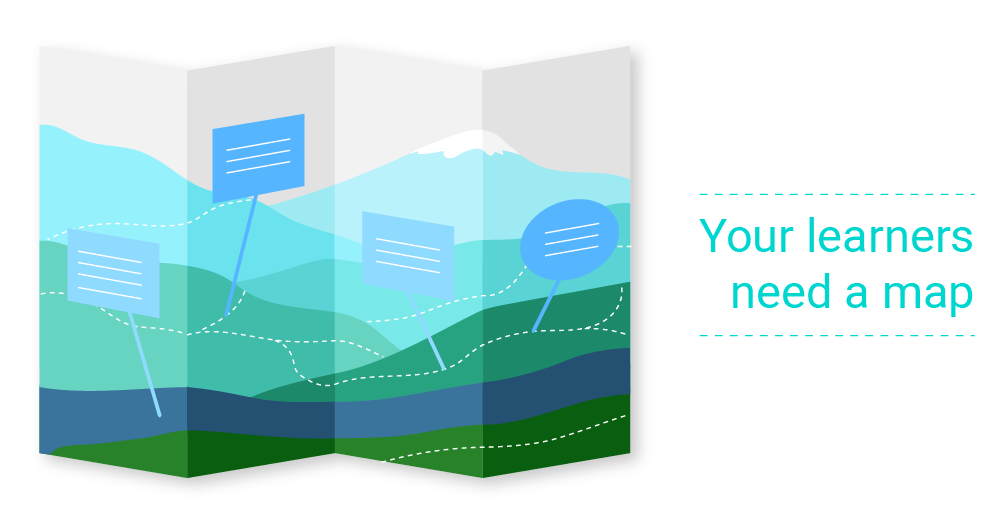Your learners need a map

At the core of the Sprout Labs learning ecosystem model there’s the principle that learners need pathways to guide them. The more I've worked with experiential learning both as a learner and designing “learning while working cultures,” I've realised one of the powerful things "a course" does is it maps out all aspects of an area. Courses are only one form of map. A common issue with training is often when you do a task you don't use all of what was covered in the training program. It’s wasted time and learning. You must have an overview of an area; you need a map.
What happens if learners don’t have a map?
As a learner, I’m very goal and task driven. I want to achieve an outcome and I want to focus on what I need to do to get that outcome. But often I find working that way means I don’t grasp fundamental concepts which then slows me down. When a learner doesn’t have a map, they can struggle with terminology and core concepts in a field. Without a map you’re expecting people to swim but often what happens is they sink.
Maps give you an overall view
I started a workshop with a group of TAFE teachers once with the question “How do you learn?” The response that surprised me came from the least academic but most technically competent person in the room. His answer was "I start by reading a book about the software”. He then explained why he started with reading. It gave him an overview of what the software could do, He then talked about how he couldn’t remember the actual steps the book described but what it gave him was an overall understanding of the system.
Examples of maps beyond courses
I've been talking about courses as "maps" but they are not the only sort of learning maps that can help guide learners. Some of these examples also use digital approaches to guide the learning process, instead of just focusing on digital learning to provide content.
Here are a few possibilities:
Competency frameworks can help guide learners in how to behave and what they need to do.
Many organisations have guides to learning different topics using the 70:20:10 model e.g. if someone needs to improve their project management there is a list of activities which are a mixture of 70:20:10 approaches.
Coaching guides that include questions for managers to ask their team members. At Sprout Labs when we design these we use the workflow features in Glasshouse to trigger email messages to managers with coaching questions that are based on what learners have been doing in modules.
In the technology field, people put together the curated round up lists of skills - “The 20 skills a …... developer needs to know in 2019” with links to posts and tutorials about these skills.
Learning while working playbooks - these are a series of workplace tasks for people to gain new knowledge and expertise. In Glasshouse these can be built as microlearning journeys that are sent to learner over a period of time.
There are small things such as a glossary of terms, process maps and flowcharts. A powerful learning activity is getting learner to build their own glossary of terms.
Journaling where a question is sent to a person every day to trigger reflective thinking. At Sprout Labs we build these types of experience by combining the learning log block and time/spaced learning to send out the prompts over a period of time.
Remember the important thing is, your learner may often sink before they learn to swim.
Robin Petterd